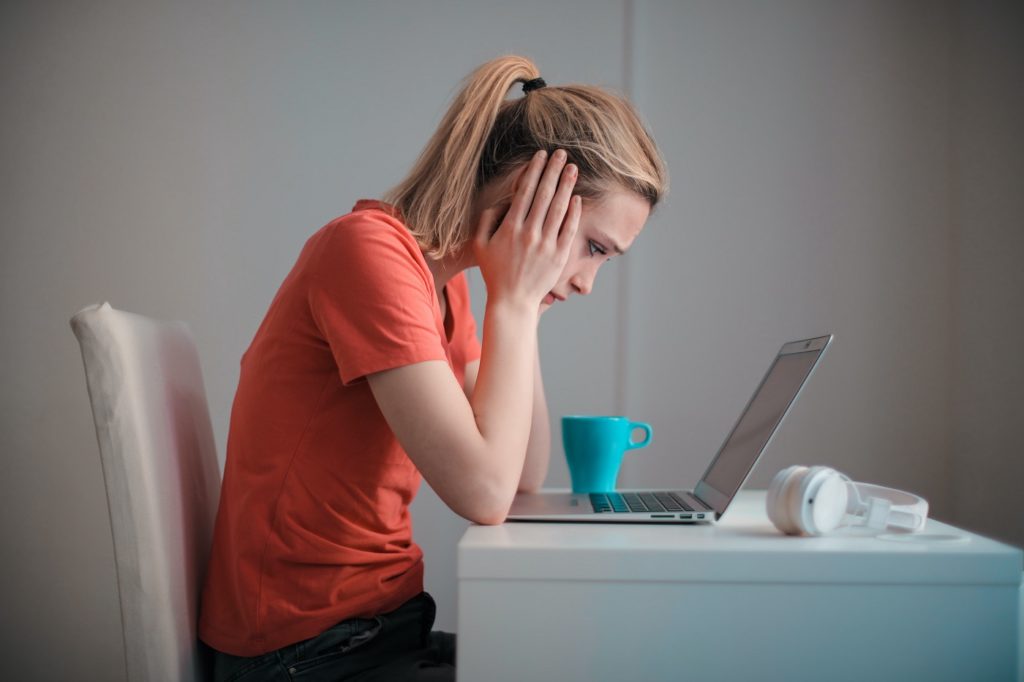The original rationale for COVID lockdowns and strict social distancing was to “flatten the curve” so as not to overwhelm hospitals with too many acutely ill patients. We have accomplished that: though things came close in New York City, demand for ventilators in the U.S. has not exceeded our hospitals’ surge capacity. But in many states the lockdowns continue, and nobody speaks of “flattening the curve” any more. What is the current rationale for these severe measures?
The political rhetoric now suggests we are “saving lives” by continuing to keep people at home. But locking down alone does not in the end save lives; it only slows the spread of the virus. The (usually unspoken) hope of politicians is that we can do this until we have an effective vaccine. That is an enormous gamble based on an axiomatic faith in science to solve our problems, which actually cannot be justified scientifically. After all, it is plausible that scientists created this virus in a lab in the first place—a claim no longer in the realm of conspiracy theory.
Our Mental Health Crisis
Nearly half of Americans report the coronavirus crisis is harming their mental health. I would suggest this is not simply because of the pandemic; more accurately, it is due to our collective decisions, our social policies, in response to the pandemic. We would expect a pandemic of this magnitude to adversely impact our mental health. But the duration and scope of the current mental health crisis was not inevitable.
Start your day with Public Discourse
Sign up and get our daily essays sent straight to your inbox.The political rhetoric now suggests we are “saving lives” by continuing to keep people at home. But locking down alone does not in the end save lives; it only slows the spread of the virus.
Last month the CDC published a devastating report on the mental health effects of lockdowns, based on a population-based survey in June of over 5,000 Americans. The findings are entirely consistent with what I’ve seen among the patients in our psychiatric clinics—namely, enormous harms. Four out of ten respondents reported at least one adverse mental or behavioral health condition. Three out of ten reported symptoms of anxiety disorder or depressive disorder, and one-quarter reported symptoms of a trauma- and stressor-related disorder due to the pandemic. Thirteen percent reported having started or increased substance use to cope with stress or emotions related to COVID-19 lockdowns.
Of particular concern, 11 percent reported they have seriously contemplated suicide in the past thirty days. Among those aged eighteen to twenty-four years old, this number was 25 percent. We should pause to consider this statistic: one-quarter of young adults in America contemplated suicide in the month of June. Rates of suicidal thinking that month were higher among minorities (Hispanic 19 percent, black 15.1 percent), among unpaid caregivers for adults (31 percent), and essential workers (22 percent). Compared to June 2019, one year previous, prevalence of anxiety disorders had tripled (26 percent versus 8 percent), and prevalence of depressive disorders had quadrupled (24.3 percent versus 6.5 percent). These are extremely sobering statistics: it is very rare to see these kinds of shifts in psychiatric epidemiology from one year to the next.
Another randomly sampled population-based study published a week later from Britain’s Office of National Statistics echoed these findings. Compared to one year earlier, in the UK, rates of depression have doubled during COVID lockdowns, with especially pronounced spikes in severe depression. This increase was most notable among young adults and those with disabilities.
We do not yet have numbers for the general population on completed suicides. But given that suicide rates were on the rise before COVID, and given the devastating numbers on suicidal ideation, depression, and anxiety in the CDC study described above, we can anticipate the news will not be good. Military officials have recently argued that social distancing rules and the pressures of lockdowns may be contributing to the 20 percent rise in completed suicides among US military service members this year.
We should pause to consider this statistic: one-quarter of young adults in America contemplated suicide in the month of June.
We know that “deaths of despair” (i.e., suicide, drug overdose, and alcohol-related deaths, often associated with socioeconomic factors) were on the rise prior to the pandemic and the opioid crisis was already taking a massive toll. Against this backdrop, we have already seen sharp increases in opioid overdose during the lockdowns, with more than 40 states recording increases in opioid-related deaths since the pandemic began. During the month of March, York County, Pennsylvania, recorded three times more overdose deaths than normal, and Jacksonville, Florida, saw a 40 percent increase in overdose-related calls. Drug treatment centers are seeing relapses of patients who had long been sober prior to COVID.
One recently published model of deaths of despair due to COVID lockdowns projects that as many as 75,000 more people will die from drug or alcohol misuse and suicide. In addition to the sudden emergence of the novel virus, this study cites unprecedented economic failure paired with massive unemployment, as well as mandated social isolation for months and possible residual isolation for years. An analysis of CDC data by the Washington Post found about 13,200 excess deaths due to Alzheimer’s and other forms of dementia since March. According to the report:
People with dementia are dying not just from the virus but from the very strategy of isolation that’s supposed to protect them. In recent months, doctors have reported increased falls, pulmonary infections, depression and sudden frailty in patients who had been stable for years. Social and mental stimulation are among the few tools that can slow the march of dementia.
In short, social isolation can kill. If this claim seems exaggerated, consider that solitary confinement is one of the worse forms of punishment we can inflict on human beings.
To put flesh on these alarming statistics, here is my own dispatch from the front lines. I am now seeing people of all political persuasions and various religious backgrounds in our psychiatric clinic who genuinely believe the Apocalypse is near. Literally. And I am not referring to individuals who are psychotic or manic. Many otherwise healthy people are completely terrified. In addition to a viral pandemic, we have a pandemic of fear—fear of the virus and fear stoked by our present political climate. “Pandemic of fear” is not a metaphor; it is a reality: this level of pervasive and constant fear does real and measurable harm.
All this must be taken into account in political decisions regarding our response to COVID. Looking only at COVID case curves, or even COVID mortality numbers, will not answer the hard questions for us. Our leaders cannot abdicate responsibility for difficult decisions and simply hide behind infectious disease epidemiologists. We have another epidemic—a mental health epidemic—to also contend with, not to mention the economic and social effects of lockdowns. It is past time for us to reckon with these devastating realities.
Rationale for Lockdowns
I supported “flatten the curve” early on to allow hospitals to prepare. Indeed, I spent months preparing for worst-case scenarios, serving on the workgroup for the University of California hospital system that developed our ventilator triage guidelines and allocation guidelines for the limited supply of the medication Remdesivir. The UC hospitals were only at 10–20 percent ventilator occupancy—nowhere near our maximum surge capacity—when Governor Newsom reinstated severe lockdowns. Why did he do this?
Our leaders cannot abdicate responsibility for difficult decisions and simply hide behind infectious disease epidemiologists. We have another epidemic—a mental health epidemic—to also contend with, not to mention the economic and social effects of lockdowns.
When “flatten the curve” became “stay home to save lives” the rationale began to involve systematic mendacity and carefully couched half-truths. As already mentioned, distancing does not stop the virus but only slows the spread. For the pandemic to end, we need herd immunity, and there are only two ways to get that: a highly effective and safe vaccine, or a sufficient proportion of the population infected who thereby acquire natural immunity (or some combination of those two). Anything else is just dragging out the inevitable.
The reason that public messaging now involves dishonesty is that locking down to “save lives” really means “stay locked down until we have an effective vaccine and sufficient time to distribute that vaccine to the population.” But no politician wants to state this in plain and clear language (except perhaps for the mayor of Los Angeles, who did say his city would not reopen until a “cure” was available). A clear admission of this would naturally invite some pointed questions, such as: How long until we get a vaccine? How long after the vaccine is approved will it take to manufacture a sufficient supply and distribute it to enough people to stop the pandemic? What if the eight vaccines now in the pipeline don’t pan out in clinical trials? What if the vaccine is only partially effective? And so on. These are questions politicians do not want to answer, but they are critically important questions to ask.
Regarding that last question about vaccine efficacy: the threshold the FDA has set for approving a vaccine for COVID is that it needs to be 50 percent more effective than placebo at preventing disease (note: not at preventing transmission). This is roughly what we get from the annual flu vaccine. Let’s suppose the initial vaccines meet that threshold. Will 50 percent efficacy be sufficient to end the lockdowns? If not, do we continue with this until we get a better vaccine? Again, if we end up with a partially effective vaccine—a likely scenario—we will still be left with another series of questions that no politician wants to answer. It is easier to stick to the simplistic meme, “stay home to save lives” and hope that people don’t ask any pointed questions.
It is time for a real public conversation about these social distancing and lockdown policies. Deferring to “science,” which cannot answer inescapably political questions, and where no single model can take account of all the various harms, will not do. There are massive human costs to our current course. It is past time for us to take stock.
Public policies that took account of the mental health toll of lockdowns would push us strongly in the direction of risk stratification: more protections on the one hand for at-risk elderly individuals and people with co-occurring conditions, but more freedom on the other hand for children to get back to school and healthy adults to go back to work. The longer schools and industries remained closed, the more the deaths of despair will mount. We will have a lot of collateral damage to answer for.
Wise solutions to vexing policy questions will involve prudential judgment that no single epidemiological model can provide. Our leaders must do their best to make those hard judgments, not hiding behind “science” or “the experts,” as though these words conjured a single monolithic table of all-encompassing data. We must do our best to take into account all the various complex risks and harms, as well as a thousand other imponderables. This is a time for wise and responsible leadership, and we need to start demanding more from our leaders.














